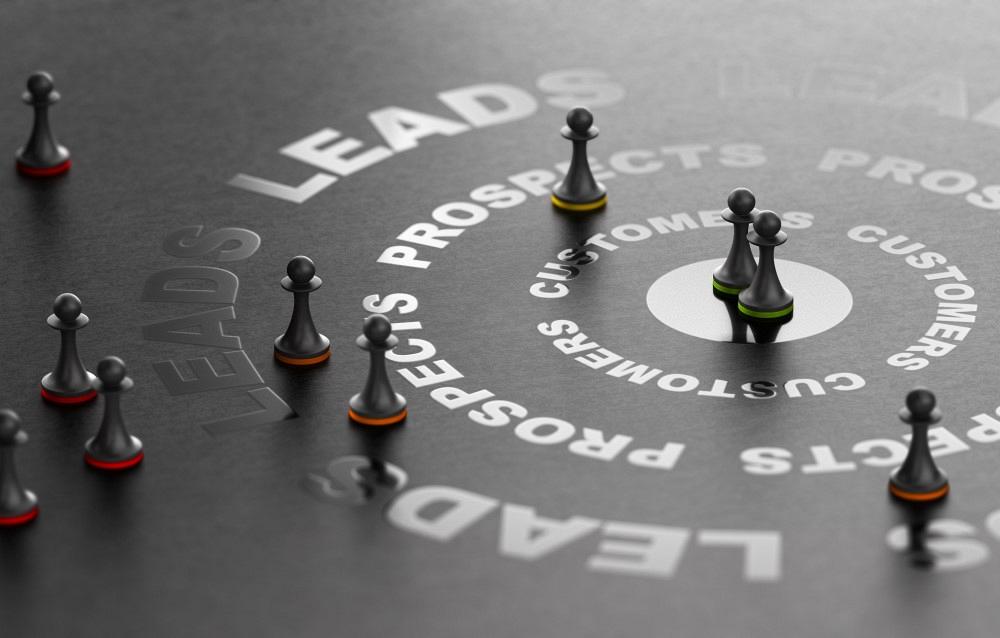Vaibhav constantly found himself struggling to close calls and secure deals, and slowly it started taking a toll on him. He wanted to rise above his challenges and wanted someone to guide him through his journey as a sales professional. He wanted to grow more adept at connecting with his clients, tailoring his approach to suit their individual needs. It is when he asked his uncle, Sivaranjan, to guide and mentor him yet again on his new quest.
Siva was glad to mentor Vaibhav and they both embarked on a journey to understand the intricacies of the sales realm. So far they have unraveled the buying and selling process dynamics and the myths and facts about sales.
Vaibhav, do you know that the number one thing that business owners overlook when it comes to their product is why their customers should care? As a result, they lose a lot of potential sales.
“Success in sales comes from differentiating your product or service by clearly articulating its values to potential customers.”
Let’s understand with an example, a camera advertisement we found on the internet. It describes the major aspects of a new product in great detail: a super CCD SR sensor, 24 megapixels resolution, ISO number…
Imagine you find yourself lost with the use of these terms. Because you have no idea what this means to you or how it will add value to your life.
As a regular user, the majority of your photos may be posted on Facebook. Your requirements could be as basic as the unruly excitement you feel when you see a popular photo and hear a chorus of appreciation – You want likes on social media!
You are not sure how the amazing technological specifications on offer from this camera will assist you do that!
Perhaps you should spend time and energy researching product evaluations and speaking with subject matter experts, however, the harsh reality of consumer advertising is that you probably won’t go the extra mile to do that.
According to the facts, you are not alone in having this mindset.
Buddy Media conducted response studies in 2013 on the topic of price discounts and discovered that customers reacted nine times more favorably to cash discounts as opposed to percentage reductions, even if they amounted to the same thing.
Are you getting my point, Vaibhav, customers are wired this way, they do not do the math!
So, how do we think we can address this problem? The answer is: remember this mnemonic – FAB or Feature, Advantage, and Benefit.
In the world of sales, effective communication is key to winning over customers and closing deals. One proven method that helps sales professionals excel in this arena is the FAB model. By leveraging the power of Features, Advantages, and Benefits, salespeople can effectively showcase the value proposition of their offerings.
Uncle, the concept sounds interesting and I want to know more about it, said Vaibhav.
Yes, let’s delve into the FAB model, and how it can improve your game.
What Is FABing?

Vaibhav, I’ve been utilizing the FAB (Features, Advantages, and Benefits) formula since I first learned about it many years ago; it’s simple to remember and even simpler to apply. Many people I talk to find selling and closing sales difficult, however, having a simple formula you believe in removes the weight off you and the dreaded price issue and puts the focus back on the benefits.
The FAB formula is a tried and true method of selling. We’ll go over what each implies to you below. When presenting each unique selling proposition of a feature of something, adding advantages and benefits is more than just reciting the feature list. FAB is more than a description; it is romancing the features and prepping to close the deal.
It is a strategic approach used by sales professionals to highlight the unique attributes of a product or service. By breaking down these attributes into distinct components, salespeople can craft compelling messages that resonate with potential customers.
Features
A feature is a distinguishing characteristic or aspect of something. When we look at a specific product feature example, it is simple to understand a feature. Let’s have a look at a digital camera again. It could have various features like a single-lens reflex camera, an 18-135mm zoom lens, and 24 megapixels. These qualities are commonly known among photographers; but, if you are new to the industry, they require explanation. Most people will be unfamiliar with your organization or product, therefore they will be unaware of the essential features you have and why they are vital; consequently, they must be informed of the benefits.
Advantage
What a feature ‘can do’ is an advantage. The advantage explains how we get from the feature to the benefit. It is the setting for the features and benefits. So having a camera with 24 megapixels means you have a higher number of pixels per area, allowing you to capture more of the image. It sharpens the image and allows you to enlarge it without losing quality. A 35-200mm lens has the advantage of allowing you to zoom in or out with a single lens, allowing good photos to be made in a range of scenarios and making the camera more versatile.
Benefit
A benefit is always drawn from a user. What the feature can accomplish for you is the benefit. So, using the feature example of 24 megapixels, we can describe various benefits to the individual taking images, such as a sharper image, the ability to enlarge without losing quality, and a higher overall image quality. Benefits of the 18-135mm zoom include greater flexibility for taking family photos, as well as the convenience of not having to change lenses for different shots.
Vaibhav, the benefits are generated from the features, however, as you can see from the examples of benefits, there is a missing link. I wouldn’t comprehend how you get from 24 megapixels to a crisper image or 18-135mm to better flexibility if I didn’t know anything about photography. There should be a description of how to travel from one to the other. This is the component that we frequently overlook when selling something that we are intimately familiar with, which is why the FAB selling strategy is such an effective tool. We believe that people will make the connection, yet they frequently do not, leaving them not understanding or believing what we are telling them. As a result, we require the advantage, explained Siva.
I think I am understanding the FAB model better now that you have added the example to it. It will help me provide clearer communication and understanding, added Vaibhav.
Good, now let’s understand the need for the FAB model, said Siva.
What Is The Need To Use FAB Model?
Vaibhav, if you want to understand the product or service you are selling inside out, then you have to jab it with the FAB model. It will help you identify the key features of a product or service and how they can add value to your customer’s life. It allows businesses to emphasize on highlighting the features that appeal to the customers and differentiates their offerings from their competitors.
Here are the reasons to use the FAB model:
- It provides a structured framework for you to communicate the value of the offerings with clarity and precision.
- By breaking down complex features into understandable advantages and benefits, the FAB model enables you to create compelling narratives that resonate with potential customers.
- Moreover, FABing helps you differentiate your offerings from the competition. By highlighting unique features, advantages, and benefits, you can position your product or service as the superior choice.
- This approach empowers you to address the specific needs and pain points of potential customers, creating a stronger connection and enhancing the likelihood of closing the deal.
If you wish to communicate better with your customers, then use the language that resonates with them. The best way to hit the chords of your customer’s hearts is to show them the product from the lens of FAB’s perspective. You will be able to make them understand how a product or service can fit their bills, leading to increased sales, and creating a stronger emotional connection and customer loyalty, elaborated Siva.
Wow, uncle, this model can work like magic. I will surely implement it in my pitches and calls, said Vaibhav with excitement.
Now Vaibhav, before you prepare yourself to use this model, you have to follow some rules. You know, what is a game without its rules? – said Siva.
Of course, Uncle, Vaibhav said while catching his breath.
Golden Rules To Utilize The FAB Model

When it comes to making effective sales, Vaibhav you have to move from a product-centric approach to a customer-centric approach. It will apply to all external communications, from content creation to publishing through advertising to all the dimensions of customer acquisition like face-to-face or online sales.
These are the golden rules you should keep in mind:
Know your customer
Understanding the needs, preferences, and pain points of your target audience is fundamental to successful sales. The FAB model facilitates this process by encouraging sales professionals to analyze their customers’ needs and align their features, advantages, and benefits accordingly.
According to a study conducted by Salesforce, 76% of buyers expect sales professionals to understand their needs and expectations. By incorporating FAB analysis into their sales strategy, professionals demonstrate a deep understanding of their customer’s requirements, gaining a competitive advantage.
Be a compelling storyteller
The FAB model helps salespeople transform dry product descriptions into compelling narratives. By focusing on the benefits and advantages that resonate with customers, sales professionals can create an emotional connection. Stories have the power to engage customers on a deeper level, making them more likely to buy.
As highlighted in one of the Forbes articles, storytelling in sales has become increasingly important. It allows salespeople to tap into the emotions and aspirations of customers, making their offerings more relatable and appealing.
Adapt to individual customers
Every customer is unique, and a one-size-fits-all approach rarely works in sales. The FAB model encourages sales professionals to adapt their communication style and emphasize features, advantages, and benefits that align with the specific needs of each customer.
Research conducted by Gong.io found that sales conversations that adapt to the customer’s needs have a 30% higher success rate. FAB analysis equips sales professionals with the necessary tools to personalize their pitches and tailor their offerings, maximizing their chances of success.
Vaibhav, I hope you understand that mastering the FAB model can unlock unparalleled success in the dynamic world of sales. By harnessing the power of Features, Advantages, and Benefits, you can elevate your communication skills to new heights, captivating customers and sealing deals with unwavering confidence.
The FAB model empowers you to go beyond surface-level product descriptions and instead craft compelling narratives that resonate on a deep emotional level. By adapting their approach to address the unique needs of individual customers, you can create personalized experiences that leave a lasting impact, said Siva.
Uncle, I will embrace the FAB model and its ability to transform mere features into compelling advantages and tangible benefits. I will become a master storyteller, weaving narratives that can captivate customers and ignite their desire to engage with the offerings. I will rise above the competition and secure a position as a sales superstar, said Vaibhav with determination in his voice.
I am sure you will, Vaibhav, smiled Siva.
https://www.linkedin.com/pulse/feature-advantage-benefit-golden-rules-sales-nick-fawbert
https://airfocus.com/glossary/what-is-a-features-advantages-and-benefits-analysis/
https://blog.fit4market.com/fab-technique-sales-methodology
https://rainedigital.com/2019/09/11/sell-more-using-fab/
https://www.gong.io/resources/labs/winning-sales-conversations/
https://www.wordstream.com/wp-content/uploads/2021/07/features-vs-benefits-umbrella-example-1.png
Written By: Jimmy Jain
Edited By: Afreen Fatima
Society of Design Thinking Professionals









